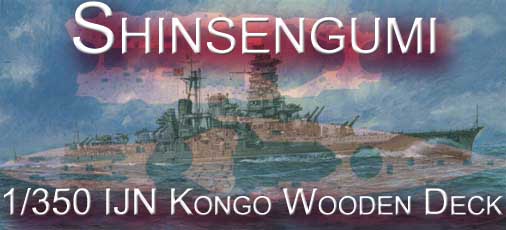|
Shinsengumi wooden decks: 1/350 Fujimi Kongo
I have begun to believe than in a previous life I must have been a squirrel,
a magpie, or some other creature that collected things. This is the only way to
explain why I feel the uncontrollable urge to acquire any aftermarket accessories
that might improve my newly bought kits. Of course, the aftermarket industry loves
people like me, and it seems we are quite a few, as new offerings keep appearing!
One of those new offerings comes from the Land of the Rising Sun, home of some
of the most successful plastic kit producers, yet, surprisingly, with a very limited
cottage industry, which until recently had been limited to brass barrels.
Shinsengumi wooden decks appeared in the Japanese hobby shop websites a few months
ago, and were discussed in the ModelWarships Main Forum at the time. Reactions were
mixed. Some members were interested in the concept, while others commented that it
would be too thick and that the wood grain in 1:1 scale wood would be visible.
I trust that the accompanying pictures will answer these questions.
|


